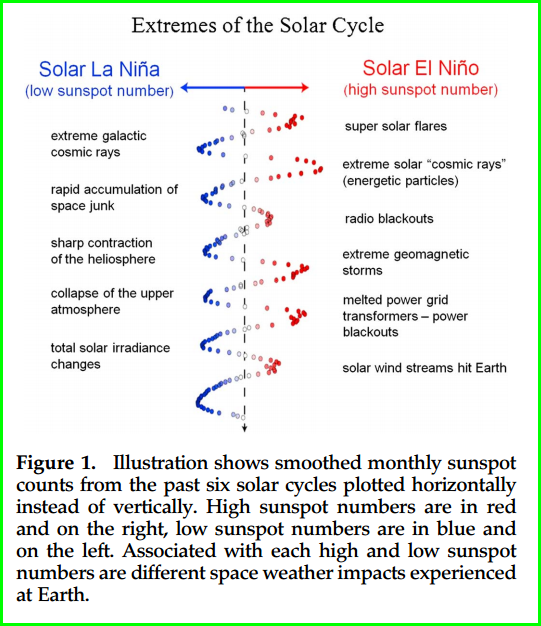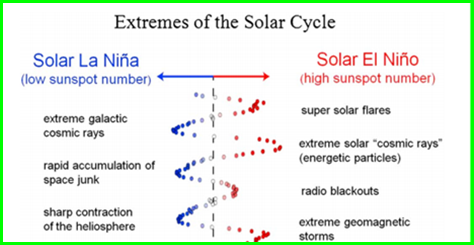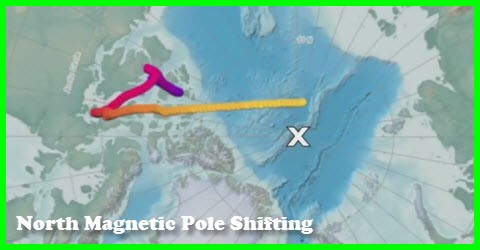Instead of an Up And Down Graph Let’s Turn It Sideways
You’ve heard of El Nino and La Nina years when the Pacific ocean currents change temperature and cause different weather pattern around the pacific.
What if we think of the solar activity (sun spot) cycle in the same way.
The Earth’s weather is affected by solar activity just as ocean temperature affect the weather in the Pacific.
This is an interesting though from the magazine “Space Weather”
During Solar La Niña (Solar Min), cosmic ray levels surge. Galactic cosmic rays coming from outside the solar system must propagate upstream against the solar wind and a thicket of solar magnetic fields. During the La Niña phase of the solar cycle, solar wind pressure decreases and Sun’s magnetic field weakens, making it easier for cosmic rays to reach Earth. Because cosmic rays are so potent—a single relativistic iron nucleus can easily shatter a strand of human DNA—Solar La Niña is a dangerous time for astronauts.
Sun’s El Niño phase (Solar Max) brings cosmic ray counts down, but solar flare activity surges. Solar explosions spray the solar system with X-rays, high energy protons, and billion-ton clouds of electrified plasma known as coronal mass ejections. This is scant relief for astronauts.
Solar El Niño affects many technologies. Ham radio operators grapple with radio blackouts. Airline traffic controllers are sometimes forced to divert international flights away from polar routes. A 2008 report by the National Research Council (NRC) warned that “extreme geomagnetic storms can cause worldwide power outages, water shortages, and disruptions to financial markets”, among other things.
Sun’s extreme ultraviolet (EUV) radiation is an excellent example of the solar cycle’s back-and-forth character. During sunspot peak years (Solar El Niño), EUV output is strong. EUV radiation heats Earth’s upper atmosphere, increasing aerodynamic drag on low-orbiting satellites. Satellites, including the International Space Station, tend to fall back to Earth during this time, which vexes satellite operators. On the other hand, space junk tends to fall back to Earth, too, which keeps the orbital environment clean.
During years of lower sunspot number (Solar La Niña), Sun’s EUV output drops, and the upper atmosphere begins to cool and contract. With sharply lower aerodynamic drag, satellites have less trouble staying in orbit—a good thing. On the other hand, space junk tends to accumulate, making the space around Earth a more dangerous place.

Discover more details on how the sun affects our planet at the source article.
The Perfect Storm
Now here’s another though.
The sun”s magnetoshere is less effective in times of a solar minimum.
At present the earth’s magnetic field is decreasing rapidly. Many believe a magnetic pole shift is under way.
That means the earth’s magnetoshere is also weakening. Our protection from space weather could be declining from two fronts.
We may be in for some interesting weather years that have not been seen for many thousands of years.
Here is that article on the Earth’s magnetic field changes
Go to tho next pg
.


